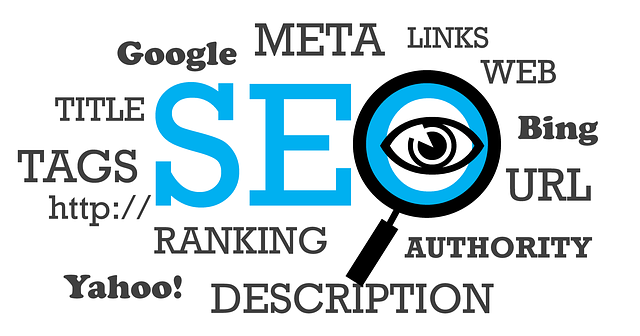
Technical SEO:Best Practices
Technical SEO: The Essential Guide to Optimizing Your Website
In the ever-competitive world of online presence, ranking high in search engine results pages (SERPs) is crucial for success. But crafting captivating content isn’t enough. You need a strong technical foundation to ensure search engines can easily find, understand, and index your website. This is where Technical SEO comes in.
This comprehensive guide will explore the key elements of technical SEO, offering practical tips and insights to help you enhance your website’s performance, visibility, and user experience.
What is Technical SEO?
Technical SEO refers to the process of optimizing a website’s infrastructure to improve its search engine ranking and user experience. It involves enhancing various technical aspects, including website speed, mobile-friendliness, crawlability, indexability, and security. By addressing these elements, you ensure that search engines can efficiently access, crawl, and index your site, ultimately boosting its visibility in search results.
Why is Technical SEO Important?
Think of search engines like busy librarians. They need a well-organized library (your website) to efficiently find and deliver the information users (searchers) are looking for. Technical SEO ensures your website is:
- Crawlable: Search engine bots can easily navigate your website’s structure and access all your content.
- Indexable: Search engines can understand and store your website’s content in their databases.
- Mobile-Friendly: Your website offers a seamless experience for users on all devices, especially mobile phones, which are now a dominant browsing force.
- Fast Loading: Nobody likes a slow website. Optimizing page speed ensures a smooth user experience and is a significant ranking factor for Google.
- Secure: Having an SSL certificate (HTTPS) encrypts user data and instills trust in visitors.
By addressing these technical aspects, you create a website that’s not only user-friendly but also speaks the language of search engines. This translates to better visibility, improved organic traffic, and ultimately, increased conversions.
Key Elements of Technical SEO
1. Website Speed Optimization
Website speed is a critical factor in both user experience and search engine ranking. Slow-loading websites can lead to higher bounce rates and lower search rankings. To improve your website speed:
- Compress Images: Use tools like TinyPNG or ImageOptim to reduce image file sizes without compromising quality.
- Minify CSS and JavaScript: Remove unnecessary code and whitespace to reduce file sizes.
- Leverage Browser Caching: Enable browser caching to store static files locally on users’ devices.
- Use a Content Delivery Network (CDN): Distribute your content across multiple servers to reduce load times.
- Optimize Server Response Time: Choose a reliable hosting provider and optimize your server settings.
2. Mobile-Friendliness
With the increasing use of mobile devices, ensuring your website is mobile-friendly is paramount. Google uses mobile-first indexing, meaning it primarily uses the mobile version of your site for ranking and indexing. To make your site mobile-friendly:
- Responsive Design: Ensure your website adapts to different screen sizes and devices.
- Optimize for Touch: Make buttons and links large enough for easy tapping.
- Improve Mobile Load Speed: Use AMP (Accelerated Mobile Pages) to speed up mobile page loading.
3. Crawlability and Indexability
For your content to appear in search results, search engines need to crawl and index your site. Here’s how to enhance crawlability and indexability:
- Create an XML Sitemap: Submit an XML sitemap to search engines to help them find and index your pages.
- Optimize Robots.txt File: Use the robots.txt file to control which parts of your site search engines can crawl.
- Fix Broken Links: Regularly check for and fix broken links to ensure a smooth crawling process.
- Use Canonical Tags: Prevent duplicate content issues by specifying the canonical version of your pages.
4. Secure Your Website
Website security is essential for protecting user data and maintaining trust. Moreover, search engines prioritize secure sites. To enhance security:
- Implement HTTPS: Use an SSL certificate to encrypt data and ensure secure connections.
- Regularly Update Software: Keep your CMS, plugins, and themes up to date to prevent vulnerabilities.
- Use Strong Passwords: Implement strong passwords and two-factor authentication for added security.
- Monitor for Malware: Regularly scan your site for malware and other security threats.
5. Structured Data and Schema Markup
Structured data helps search engines understand your content better, leading to enhanced search visibility and rich snippets. Implement schema markup to:
- Enhance SERP Features: Improve the appearance of your search results with rich snippets like star ratings and FAQs.
- Boost Click-Through Rates: Rich snippets can make your listings more attractive, increasing CTR.
- Improve Voice Search Optimization: Structured data helps optimize your content for voice search queries.
6. On-Page SEO Best Practices
On-page SEO focuses on optimizing individual pages to rank higher and attract relevant traffic. Key on-page SEO practices include:
- Title Tags and Meta Descriptions: Craft compelling and keyword-rich titles and meta descriptions.
- Header Tags (H1, H2, H3): Use header tags to structure your content and highlight important sections.
- URL Structure: Create clean, descriptive, and keyword-rich URLs.
- Internal Linking: Link to other relevant pages on your site to improve navigation and link equity.
- Optimize Images: Use descriptive file names, alt text, and captions for images.
7. Technical SEO Audits
Regular technical SEO audits are essential for maintaining and improving your website’s performance. A thorough audit helps identify and fix issues that could hinder your site’s ranking. Key components of a technical SEO audit include:
- Site Speed Analysis: Use tools like Google PageSpeed Insights and GTmetrix to assess and improve site speed.
- Mobile Usability Testing: Ensure your site is fully functional and user-friendly on mobile devices.
- Crawlability Check: Use tools like Screaming Frog to identify crawl errors and fix them.
- Indexability Review: Check your site’s index status using Google Search Console and address any issues.
- Security Assessment: Regularly scan for vulnerabilities and ensure your site is secure.
Conclusion
Technical SEO is a critical aspect of your overall SEO strategy, laying the foundation for higher search engine rankings and improved user experience. By focusing on website speed, mobile-friendliness, crawlability, indexability, security, structured data, and on-page SEO best practices, you can optimize your site for success. Regular technical SEO audits ensure that your site remains in top shape, ready to attract and retain organic traffic.
Remember, the key to effective technical SEO is continuous improvement and staying up-to-date with the latest best practices and algorithm updates. By investing time and effort into technical SEO, you’ll pave the way for a more visible, user-friendly, and successful website.
